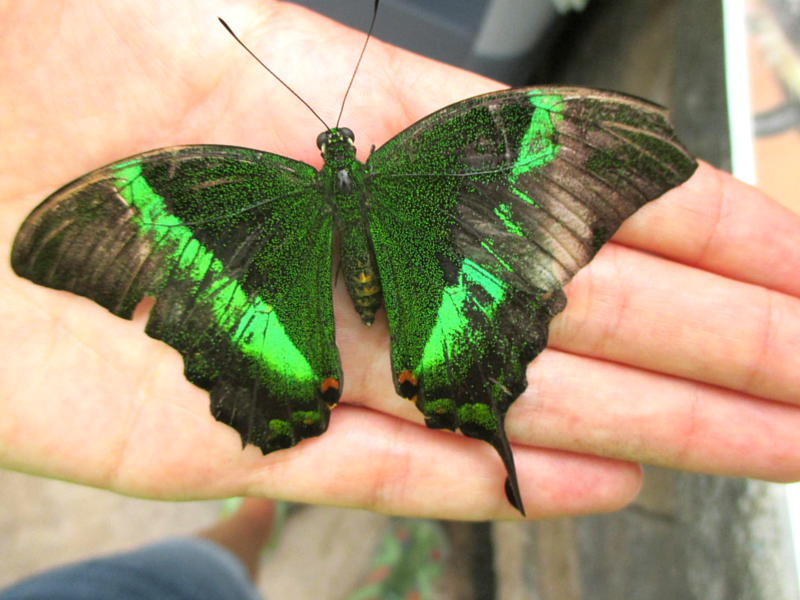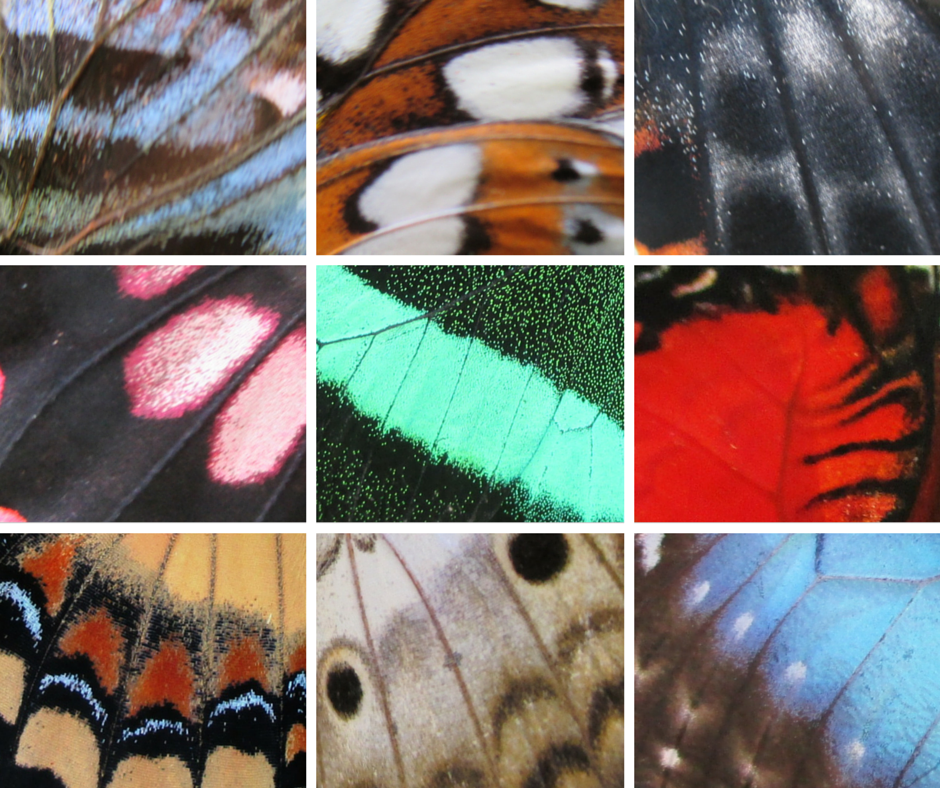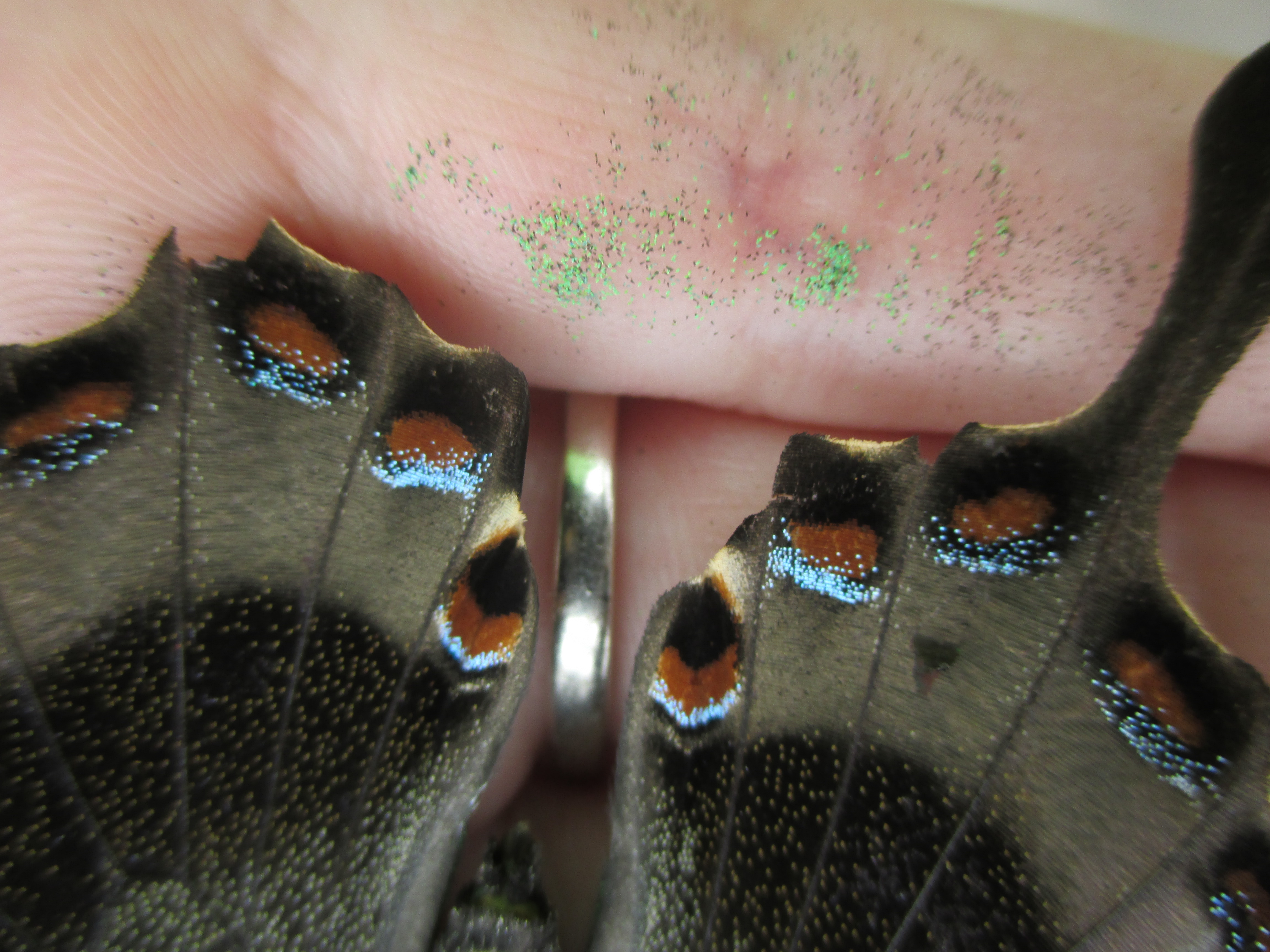Butterfly Scales = Pixie Dust
When butterflies pass away in the Butterflies LIVE! exhibit, it can be a sad and difficult situation to explain to guests. So I try to use that opportunity to explain to guests how fragile and delicate these creatures are. Typically, I will allow guests to touch and feel a butterfly’s wings after they have “ended their life cycle.”
After showing a group of children a banded peacock, one of them informed me that it was actually pixie dust covering their wings and that’s how butterflies can fly. While this explanation is both creative and adorable, the pixie dust-like material coming off of their wings are scales! Yes, butterflies have scales. Their wings are covered with thousands of them, with about 600 scales per a square millimeter.
Butterfly wings are actually made up of thin layers of proteins called chitin and are supported by a system of tubular veins that allows for oxygen exchange. The wings are then covered by an intricate system of tiny scales that give butterflies their unique color and pattern variations. These scales help them absorb sunlight and assist them in their flight. Removing these scales makes their wings more susceptible of damage and shortens a butterfly’s lifespan.

This was the banded peacock who completed his life-cycle. Guests were able to touch his wings to see the scales rub off.


